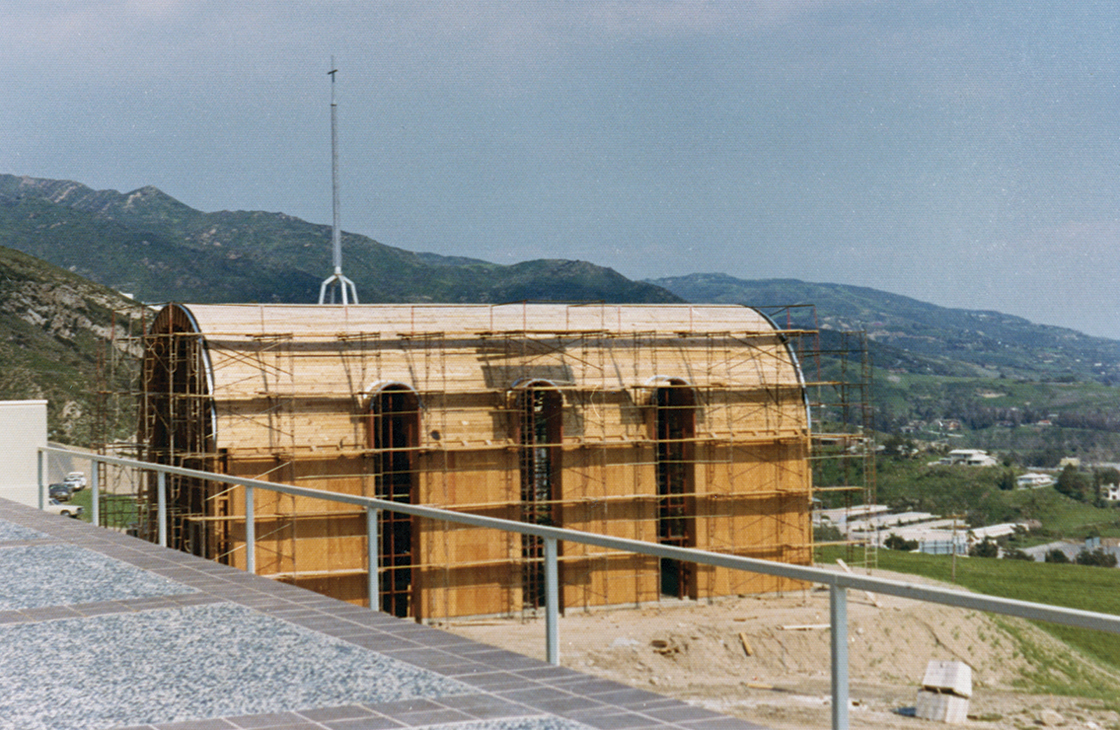Golden Waves
A look back at the early milestones that shaped the development of the Malibu campus
For 50 years, Pepperdine University's Malibu campus has been home to an extraordinary community of thinkers, leaders, innovators, and believers who have cultivated a spirit of excellence that stretches beyond the wildest dreams of founder George Pepperdine.
It began with a group of colleagues and friends who saw an opportunity to invest in
the future of George Pepperdine College beyond its original Los Angeles campus. Together,
they dedicated their lives to the advancement of a Christian college education steeped
in faith and the values of purpose, service, and leadership. Today, Pepperdine University
has expanded that dream in ways those early visionaries could have never imagined.
Take a look back at the community members and milestones that shaped the Malibu campus into a place that has fostered the intellectual, personal, and spiritual growth of exceptional individuals who have made a difference in their own distinct ways.
Campus Under Construction
Pepperdine College administration had been giving serious thought to establishing
a second campus in Malibu since the early 1960s to expand the school’s footprint.
A formal committee evaluated 40 different locations in the area and narrowed it down
to three sites with potential: Calabasas, Westlake Village, and 138 acres in Malibu
owned by the prominent Adamson family. On October 7, 1968, then chancellor and later
president M. Norvel Young announced that Pepperdine College had accepted the Adamson
family’s gift and launched an initiative to raise the funds to build the Malibu campus
that would be designed by architect William L. Pereira.
Birth of a College
Amid the buzz surrounding the building of a new college campus in Malibu, 3,000 friends
and supporters gathered at two locations—the second added to accommodate the overflow
of guests—for the Birth of a College gala on February 9, 1970, at the Century Plaza
Hotel and the Beverly Hilton. Featured guests included then governor Ronald Reagan,
recording artist Pat Boone, and others who believed in the future of Pepperdine and
committed to supporting it for years to come. From left to right, Pereira, Reagan,
Young, Clint Murchison, and Pepperdine president William S. Banowsky pose with architectural
plans of the new Malibu campus, which were revealed for the first time at the event.
Brock House
Following the Birth of a College event, Margaret Brock, heir to a commercial jewelry
fortune, was so inspired by the potential of Pepperdine’s future that she committed
$325,000 to build the official residence of the University president. The result was
a 9,000-square-foot house overlooking campus that was completed in 1973 and dedicated
in 1975 in Brock’s name. Brock would later endow student scholarships at the law school
and give beachfront property to the University. Here, she tours the Malibu campus
as it nears the end of its construction with President Banowsky.
Payson Library
The library was named for Charles S. Payson, a native of Maine, whose son, John, transferred
to Pepperdine from Bowdoin College in 1963. The Paysons were grateful for the care
with which Pepperdine professors Wade Ruby and James Smythe (’45) developed John into
a scholar of English literature and agreed to help fund the new library at the Malibu
campus.
Stauffer Chapel
Stauffer Chapel was constructed during the first academic year on the Malibu campus.
The chapel features 3,000 square feet of stained glass designed by Robert and Bette
Donovan and created from thousands of pieces of handblown glass in more than 100 hues.
After 13 months of work, Stauffer Chapel was dedicated on November 4, 1973, in the
name of John and Beverly Stauffer, who had come to appreciate Pepperdine’s citizenship
education program and its strong Christian mission.
Firestone Fieldhouse
While the facility opened for student use in the 1973–74 academic year, Firestone
Fieldhouse, Pepperdine’s gymnasium, appears here in March 1973, midway through construction.
Construction was delayed because classrooms, laboratories, the library, and other
academic and residential spaces were given priority. Leonard Firestone, who gave a
gift in support of the construction of the fieldhouse, was the son of the founder
of the Firestone Tire and Rubber Company and had served on Pepperdine’s president’s
board.
Phillips Theme Tower
The Malibu campus opened before the completion of the Phillips Theme Tower, president Bill Banowsky’s vision for a clear signal of Pepperdine’s commitment to its Christian mission. Though Pereira drew up the plans for the 125-foot obelisk-shaped structure in early 1972, significant opposition to the tower developed within the Malibu community that halted its progress. Work on the tower ceased for six months, and the campus opened with the tower only half built. By September 1973, the structure was completed and dedicated as the Phillips Theme Tower, named for Benjamin Dwight Phillips and his wife, Mildred, who were deeply rooted in the Stone-Campbell movement and eager to support an institution associated with Churches of Christ.







